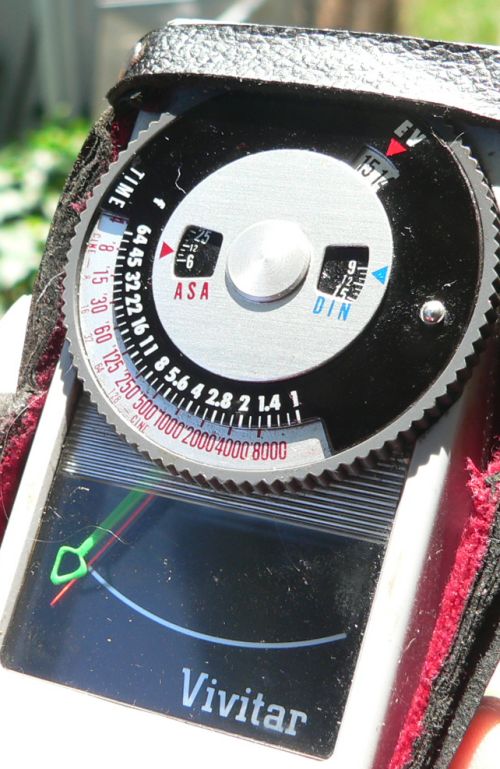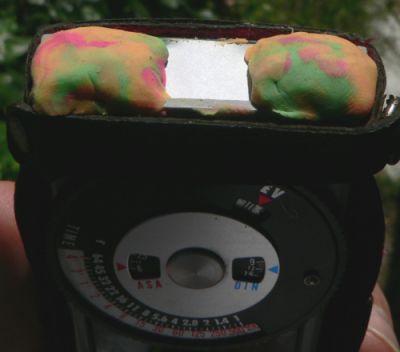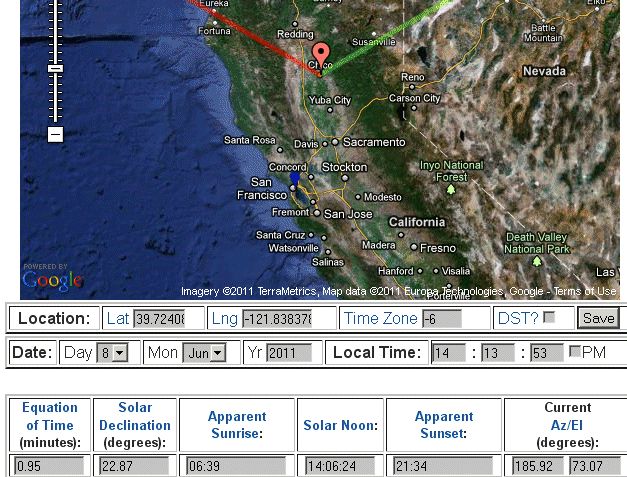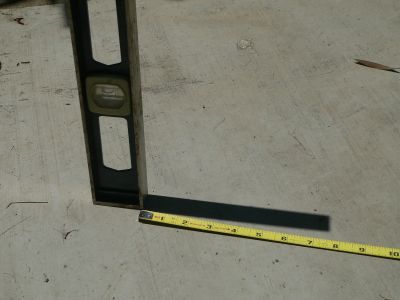


|
 Solar Measurements
Solar Measurements
|
|
 Here is how you can use an ordinary camera exposure meter to measure Solar Flux.
Here is how you can use an ordinary camera exposure meter to measure Solar Flux.
First, you can measure Lux directly from the meter. Actually that is Lux/m2.
Set the ASA to 10, Use the aperture of "1" as the marker, and read Lux per sq ft on the speed dial.
I have pointed the meter toward the sun and see the needle off the scale and also the speed reading off
the scale. Never the less, it reads in excess of about 40,000 footcandles.
There is no graduation mark for 16,000 nor 32,000, so you are left with only a guess.
Multiple by aprox 10 to get from
sq ft (footcandle) to sq meters. That is 400,000 Lux/sqmeter.
Now to go from Lux/m2 to Watts/m2, multiply by .00146.
Watts/m2=.00146 x Lx/m2
The solar flux as crudely read on my exposure meter is in excess of 584 Watts/m2.
This reading is vague and inaccurate, but at least a camera meter CAN be used - validating the method.
If you are a die hard...
Keep the ASA on 10,
throw some modeling clay on the lense, and adjust to read read Watts/m2 directly.
No conversions!
But the scale is still
not very accurate as logarithmic readings are only accurate to about 20%. Remember if the needle moves
so much as a tiny small increment, the value changes by a whapping twice or whapping 50%.
Therefore, this method sucks.
 A better method:
A better method:
Just read it off of the NOAA web site...
 http://www.esrl.noaa.gov/gmd/grad/solcalc/
http://www.esrl.noaa.gov/gmd/grad/solcalc/
Pick a day
Pick a Latitude
Here are the variables that we need.
Our geographical Latitude on the globe.
Total relative Physical Elevation, physical Az of the sun; actually this is all we need.
But it is measured from the horizontal.
Solar Declination
The Elevation of the sun is what we want, just in a different form:
The compliment of the Elevation of the sun is the Projection angle, or
measure from the vertical.
I have a two foot level.
I am just checking in the back yard that NOAA got it right; They did.
Make shure the level is vert. Do not use NOAA's sun noon time.
In my case it is near noon local standard time.
And "around noon" does not have to be exact: The shadow changes very little in length at noon.
The shadow really begins to lengthen near sundown and sunrise.
It really begins to stretch out for the tiniest time change.
You can almost see the shadow change by the second.
This is because the derivative of the cosine is the sine.
We are talking about high noon: zero degrees.
And the sine of zero degrees is zero:
There is no change.
This is close enough for back yard work.
The Cosine of this angle should give the Sol. (of a flat plane, on a clear day)
One Sol is aprox 1000 Watts/m2 at the equator, sun at noon with rays 90 degrees to a flat plane surface,
at sea level.
The variable of the atmosphere, reflection, absorbtion, etc, is of minor concern on a clear day.
Now, one has a method to calibrate a solar flux monitoring Panel or Photoresistor sensor.
One more thing:
You should stay away from Daylight Savings Time, or any other politically motivated aberrations.

16AWG is .00473 Ohms/ft


 Solar Measurements
Solar Measurements



 http://www.esrl.noaa.gov/gmd/grad/solcalc/
http://www.esrl.noaa.gov/gmd/grad/solcalc/







